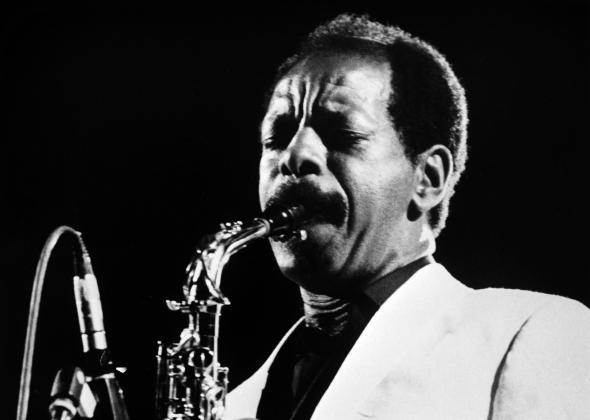Read more of Slate’s remembrances of Ornette Coleman.
On May 22, 1959, the Ornette Coleman Quartet stepped into Radio Recorders studio in West Hollywood—where Elvis Presley and Louis Armstrong had recorded some of their hits—and, all in one day, laid down six Ornette originals. They all appeared on an album called The Shape of Jazz to Come, an extraordinary mix of gentle blues, up-tempo frenzy, and a five-minute ballad called “Lonely Woman” that was unlike anything ever heard. Baffling at the time, though even then strangely mesmerizing, it quickly emerged—and still remains—the most hauntingly beautiful song in jazz.
The song (which I already wrote about, in some detail, in my book 1959: The Year Everything Changed) begins with Charlie Haden playing a slow bass dirge and Billy Higgins swirling a fast drum riff, an unusual pairing from the get-go. Then enter Coleman on alto sax and Don Cherry on pocket trumpet, in unison, blowing a sorrowful melody, both of them bending notes, wailing, so naked with emotion that it still raises shivers more than a half-century later.
After reciting the theme a couple times, Coleman takes his solo. Usually in jazz, a soloist improvises on the chords of the tune, but Coleman wanders off in a different direction—it seems like a different song. Yet somehow the piece hangs together; Haden and Higgins keep up their slow-fast dirge, Cherry adds color tones, and after Coleman says what he has to say, he comes back to the theme, back down to Earth, with total aplomb, as if he’d never left orbit.
It was a radical departure from jazz of the time; it still seems radical today. But listen to it a few times, and you’ll hear—as did many skeptics of the day who came to appreciate and love his music—that, in fact, it’s a marvel of simplicity. It’s pure melody, and aching beauty. The novelty is that the melody doesn’t go in predictable directions: there’s no compass of chords to guide you from one point to another. (There’s no instrument, like a piano or guitar, laying down chords at any point.) You have to immerse yourself in the song, as something fresh, and follow it on its own terms.
Yet, despite the term that some attached to Coleman’s music, free jazz, there is nothing anarchic here. There is structure, and in fact it’s harder to play than more traditional music, because, as Don Cherry once put it, it required “developing your ear along with your technical proficiency … We have to know the chord structure perfectly, all the possible intervals, and then play around it.”
One more thing: The sound quality of the original LP was excellent; even the budget CD sounds quite good, but if you’re into vinyl and you want to feel like the quartet is in the room, get the two-disc reissue, mastered at 45 rpm, on the ORG Music label.
